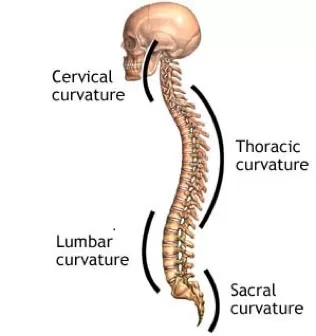Do your legs tingle, become numb, or feel weak? You may be experiencing Sciatica. The term Sciatica describes leg pain that originates from the lower back and travels through the buttock and down the large sciatic nerve in the back of each leg. Sciatica is not a medical diagnosis in and of itself –it is a symptom of an underlying medical condition. Common lower back problems such as: lumbar herniated disc, degenerative disc disease, and spondylolisthesis can cause sciatica symptoms.
Sciatica is often characterized by one or more of the following symptoms:
• Constant pain in only one side of the buttock or leg (rarely in both legs)
• Pain that becomes worse when sitting
• Leg pain that is described as burning, tingling, or searing
• Weakness, numbness, or difficulty moving the leg, foot, and/or toes
• A sharp pain that may make it difficult to stand up or walk
• Pain that radiates down the leg and possibly into the foot and toes
Physiotherapy exercises incorporating a combination of strengthening, stretching, and aerobic conditioning are a central component of almost any sciatica treatment plan.
• Strengthening exercises- Most of these back exercises focus not only on the lower back, but also the abdominal muscles, and the buttock and hip muscles.
• Stretching exercises- Stretches for sciatica are designed to target muscles that cause pain when they are tight and inflexible.
• Low-impact aerobic exercise- Some form of low-impact cardiovascular exercise such as: walking, swimming, or pool therapy is usually a component of recovery, as aerobic activity encourages the exchange of fluids and nutrients to help create a better healing environment.
Also read, Physiotherapy Clinic Etobicoke
When patients engage in a regular program of gentle exercises, they can recover more quickly from sciatica pain and are less likely to have future episodes of pain. As sciatica is due to pressure on the sciatic nerve, it stands to reason that treatment involves removing this pressure. Your physiotherapy treatment aims to achieve this by reducing nerve pressure caused by poorly moving spinal joints as well as easing muscular tension in the lower spine, buttock, and leg.
If you are suffering from sciatica please do not delay. You can achieve the best results when you address the symptoms early!
Click HERE to book an appointment with a physiotherapist at one of our eight locations.
- Physiotherapy Etobicoke – Triangle Physiotherapy Etobicoke
- Oakville Physiotherapy Clinic – Triangle Physiotherapy Oakville
- Physiotherapy North York – Triangle Physiotherapy North York
- Mississauga Physiotherapy Clinics – Triangle Physiotherapy Mississauga
- Downtown Physiotherapy Clinics – Triangle Physiotherapy King West
- Uptown Physiotherapy Clinics – Triangle Physiotherapy Lawrence Park
- Physiotherapy Clinic Downtown Toronto – Triangle Physiotherapy Queens Quay
- Physiotherapy Clinics Mississauga – Triangle Physiotherapy Erin Mills
Dealing with numbness can be challenging, but physiotherapy can help by improving circulation, reducing nerve compression, and enhancing mobility. For those seeking professional physiotherapy services to address numbness or related conditions, there are clinics in physiotherapy Etobicoke, Oakville, North York, Toronto, Lawrence Park, Queens Quay, Erin Mills, Mississauga, and Liberty Village. These locations offer expert care and personalized treatment plans to help you regain sensation and improve your quality of life.
Back pain? You are not alone. Over 80 % of Canadians will experience back pain atleast once in their life. However, about 90% of back pain is not caused by any serious injury or disease. That being said, it doesn’t make it any less painful or debilitating. For a lot of people, traditional physiotherapy and massage therapy works well, but if it doesn’t don’t be discouraged… there is still hope! As a physiotherapist myself that has suffered from back pain, yoga has changed my life! It has helped me increase my flexibility, core strength, improve my posture and overall enhance my life.

Why Yoga?
1. Stretching
The spine is meant to move in lots of different ways. If we don’t move or stretch it gets stiff and rusty. This can start to cause some aches and pains which can get worse over time if it is not addressed. It can also make you more susceptible to becoming that 10% of people that suffer from a more significant injury. “But it hurts to move,” you say… Yes, oftentimes it does cause some discomfort to move especially if you haven’t tried to move in certain directions for a long time but science now tells us that it is far better for your back to move in a controlled and safe way rather than not moving. This is where yoga can help…. Yoga is a very gentle and proven way to help loosen up your back and make sure it moves smoothly within all its normal ranges of motion.
2. Strengthening
All of us have heard that if you have back pain you should strengthen your core, right? Yoga creates a great way of functionally strengthening your core. What that means is instead of isolating certain muscles, the yoga poses (asanas) that you are taken through will help you learn how to use all the muscles of your core together (including your diaphragm and pelvic floor!). If you continue strengthening your core on the ground then your body doesn’t get stronger in the positions it needs for everyday activities. For example, vacuuming your house requires you to be slightly bent over and pushing/pulling. Yoga poses that can simulate will force you to strengthen your core muscles in the positions it is needed so that once you get stronger, vacuuming won’t be painful.
There are many other benefits of yoga that can help with pain from breathing techniques (if it works for women in labour then it can work for your back pain too!) Also, mind-body awareness and connection is developed to help you realize if there are postures or positions that you are doing out of habit that you don’t realize can be harming your body. Yoga can correct imbalances of your musculoskeletal system that you didn’t even know existed.
Click HERE to book an appointment with a physiotherapist at one of our eight locations.
- Physiotherapy Etobicoke – Triangle Physiotherapy Etobicoke
- Oakville Physiotherapy Clinic – Triangle Physiotherapy Oakville
- Physiotherapy North York – Triangle Physiotherapy North York
- Mississauga Physiotherapy Clinics – Triangle Physiotherapy Mississauga
- Downtown Physiotherapy Clinics – Triangle Physiotherapy King West
- Uptown Physiotherapy Clinics – Triangle Physiotherapy Lawrence Park
- Physiotherapy Clinic Downtown Toronto – Triangle Physiotherapy Queens Quay
- Physiotherapy Clinics Mississauga – Triangle Physiotherapy Erin Mills
Yoga can be a powerful tool for improving back health, enhancing flexibility, and reducing pain when combined with physiotherapy. For those seeking professional physiotherapy services to complement their yoga practice, there are clinics in physiotherapy Etobicoke, Oakville, North York, Toronto, Lawrence Park, Queens Quay, Erin Mills, Mississauga, and Liberty Village. These clinics offer expert care and personalized treatment plans to help you maintain a healthy back and overall well-being.
Working in a busy outpatient clinic with primarily an orthopedic focus, I see a lot of patients with postural dysfunction. Over time, I’ve developed a few key points that I talk to most of my patients about.
Definition
Posture is a “position or attitude of the body, the relative arrangement of body parts for a specific activity, or a characteristic manner of bearing one’s body.”
i.e. posture is another word that most therapists use interchangeably with ‘alignment’
So, why is posture important? Each individual is unique in terms of personality and physical shape, so shouldn’t posture be unique to each person too?
Yes and no.
While we each have our own preferences and habits, there’s definitely a right way of alignment for optimum health.
Curves of the spine
The spine curves forward at the neck and lower back, known as LORDOSIS. It curves backwards at the mid-back, known as KYPHOSIS. Excesses in any of these curves causes imbalance and asymmetry.

Examples of non-ideal postural alignment
Ideal alignment: Ears in line with shoulders in line with hips, knees and ankles
Kypholordosis: Exaggerated curves in mid and lower back
Flat back: Flattening of the curves of mid and lower back, most commonly seen in office-workers
Sway back: Forward shift of the pelvis in relation to the hips leading to a flattened low back and more curved mid back
Effects of poor posture
- Impaired mobility manifested by tightness in certain groups and weakness in others
- Excessive compression of joints leading to herniated discs, facet dysfunction, impingement etc
- Reduced lung capacity
- Impaired digestion
- Compression on nerves and/or blood vessels
How do I fix it?
To put it simply, sit up straight! The more we actively try to maintain our spine in a neutral alignment, the less damage we cause.
Here are some tips to help minimize the effects of improper alignment.
- Take frequent breaks, whether you are in a job that is sedentary or physically taxing. Repeated load-bearing movements such as lifting or sustained positions such as sitting at a desk for many hours are both equally detrimental.
- Correct slouching by remembering to stand so that your head is stacked squarely above the chest and the pelvis is directly over the center of the knees and ankles. Stand with your back against a wall and draw your shoulder blades down and take a deep breath.
- Use an ergonomically designed workstation. A chair with the right amount of curvature in the lower back area will align the entire spine to a good neutral position.
- Adopt a sound lifting technique. Do a “squat-lift” v/s a “stoop-lift”. Use a hand truck or a dolly if possible. For more information on how to lift, see a physiotherapist for a work-safety consultation.
To ensure the best spinal health, schedule a consultation with a physiotherapist or chiropractor at Triangle Physiotherapy and Rehabilitation!
Written by: Jigisha Parekh, Registered Physiotherapist
Click HERE to book an appointment with a physiotherapist at one of our eight locations.
- Physiotherapy Etobicoke – Triangle Physiotherapy Etobicoke
- Oakville Physiotherapy Clinic – Triangle Physiotherapy Oakville
- Physiotherapy North York – Triangle Physiotherapy North York
- Mississauga Physiotherapy Clinics – Triangle Physiotherapy Mississauga
- Downtown Physiotherapy Clinics – Triangle Physiotherapy King West
- Uptown Physiotherapy Clinics – Triangle Physiotherapy Lawrence Park
- Physiotherapy Clinic Downtown Toronto – Triangle Physiotherapy Queens Quay
- Physiotherapy Clinics Mississauga – Triangle Physiotherapy Erin Mills
To combat the negative effects of poor posture, seeking professional help from a physiotherapist can be highly beneficial. Whether you need Physiotherapy in Etobicoke, Oakville, North York, Toronto, Lawrence Park, Queens Quay, Erin Mills, Mississauga, or Liberty Village, there are clinics available to help improve your posture and overall well-being.




